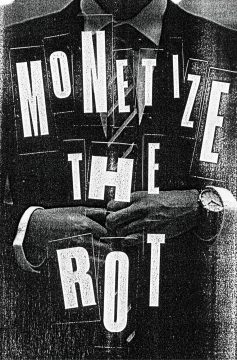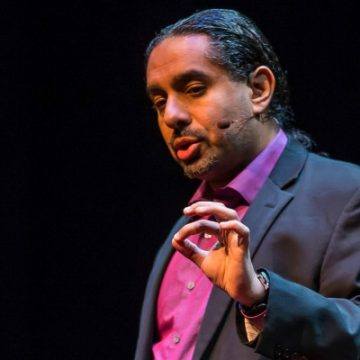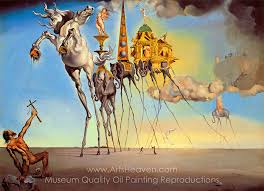Month: September 2019
The Gift of Lewis Hyde’s ‘The Gift’
Margaret Atwood at The Paris Review:
 The Gift has never been out of print; it moves like an underground current among artists of all kinds, through word of mouth and bestowal. It is the one book I recommend without fail to aspiring writers and painters and musicians, for it is not a how-to book—there are many of these—but a book about the core nature of what it is that artists do, and also about the relation of these activities to our overwhelmingly commercial society. If you want to write, paint, sing, compose, act, or make films, read The Gift. It will help to keep you sane.
The Gift has never been out of print; it moves like an underground current among artists of all kinds, through word of mouth and bestowal. It is the one book I recommend without fail to aspiring writers and painters and musicians, for it is not a how-to book—there are many of these—but a book about the core nature of what it is that artists do, and also about the relation of these activities to our overwhelmingly commercial society. If you want to write, paint, sing, compose, act, or make films, read The Gift. It will help to keep you sane.
I doubt that Lewis Hyde knew while he was writing it that he was composing such an essential work. Perhaps he felt he was merely exploring a subject of interest to him—in its short form, why poets in our society are seldom rich—and enjoying the many tributaries he was uncovering through his exploration without realizing that he had hit on a wellspring. When asked by his original editor who his presumed audience was, he couldn’t really pinpoint it but settled for “poets.” “That’s not what most editors want to hear,” as he says in his preface to the 2007 edition.
more here.
Selling Off—And Selling Out—The Public Sector
Whitney Curry Wimbish at The Baffler:
 Mainstream media outlets tend to skip those details when they talk about privatization, as if a corporation is a sentient monolith and not run by individual human beings like McKesson chief executive officer John H. Hammergren, who in 2011 was paid more money than any other CEO in America. He retired at the end of March and will reportedly receive a $114 million pension, in addition to other benefits worth nearly $25 million. While vets struggle to get competent treatment for depression and service members live in houses with mice and mold, Hammergren’s home, until recently, was a 23,000-square-foot compound in Contra Costa County that included a rock climbing wall; courts for tennis, bocce ball, racquetball, and squash; a car wash; and a yoga center. He sold it last year for three times the $3 million he bought it for in 1996. (He had been hoping to sell it for seven times as much.)
Mainstream media outlets tend to skip those details when they talk about privatization, as if a corporation is a sentient monolith and not run by individual human beings like McKesson chief executive officer John H. Hammergren, who in 2011 was paid more money than any other CEO in America. He retired at the end of March and will reportedly receive a $114 million pension, in addition to other benefits worth nearly $25 million. While vets struggle to get competent treatment for depression and service members live in houses with mice and mold, Hammergren’s home, until recently, was a 23,000-square-foot compound in Contra Costa County that included a rock climbing wall; courts for tennis, bocce ball, racquetball, and squash; a car wash; and a yoga center. He sold it last year for three times the $3 million he bought it for in 1996. (He had been hoping to sell it for seven times as much.)
Government enablers of privatization hand contracts to the business class because they want their campaign contributions, and later, once they’re out of office, they want jobs and bloviation gigs. They also want public works that really are falling apart to stop being a problem for their approval ratings.
more here.
Daniel Johnston’s Heroic Self Confidence
Yo Zushi at The New Statesman:
 And it’s his music, and his equally affecting artwork, that Johnston should be remembered for. That’s why I’ve resisted till now touching upon what the word “outsider” really means when we speak of him. It’s a euphemism, a somewhat awkward way of acknowledging his schizophrenia and bipolar disorder. Since Jeff Feuerzeig’s powerful 2005 documentary The Devil and Daniel Johnston, the singer’s mental health issues have been central to his myth, to the point that the knowledge of them threatens to overshadow his accomplishments. What I mean is that “True Love Will Find You in the End” is a great song – not just “great for a crazy guy”. I think Wilco’s Jeff Tweedy said it best a couple of years ago in an interview with the New York Times: “Daniel has managed to create in spite of his mental illness, not because of it. He’s been honest in his portrayal of what he’s been struggling with without overtly drawing attention to it.”
And it’s his music, and his equally affecting artwork, that Johnston should be remembered for. That’s why I’ve resisted till now touching upon what the word “outsider” really means when we speak of him. It’s a euphemism, a somewhat awkward way of acknowledging his schizophrenia and bipolar disorder. Since Jeff Feuerzeig’s powerful 2005 documentary The Devil and Daniel Johnston, the singer’s mental health issues have been central to his myth, to the point that the knowledge of them threatens to overshadow his accomplishments. What I mean is that “True Love Will Find You in the End” is a great song – not just “great for a crazy guy”. I think Wilco’s Jeff Tweedy said it best a couple of years ago in an interview with the New York Times: “Daniel has managed to create in spite of his mental illness, not because of it. He’s been honest in his portrayal of what he’s been struggling with without overtly drawing attention to it.”
more here.
Wednesday Poem
self-portrait of the apocalypse as a california sunset
there’s a turritopsis dohrnii in these waters.
locals call it immortal jellyfish b/c it reverts
to a polyp when it’s stressed or sick or old.
it can do that for eternity, living forever.
i hope i can achieve the same endless do-over &
wrap my arms around your tattooed body
when i bob to the surface like a buoy.
there was a 76ers game on one of the television sets
at the electronics store i went to last night. they
were up by five on the raptors. superstar hall of famer
absolute pimp nba center wilt chamberlain slept
with 20,000 women & if you laid all of their bodies
out across the pacific, you would have to do it over
270 times before you could reach asia. on the television set
next to that one, seinfeld was playing. & we were born
the spring before the summer it ended, the summer
everyone gathered to watch that show about nothing.
this a poem about nothing. the number one song in america
was “i don’t wanna miss a thing” because they all knew
there was so much armageddon in the future left to see.
i laugh into the ocean from the lens of the oculus rift
that my memory of you, my once-mansfield-now-japanese
sweetheart, is living in. & i think about the homeless man i
gave my half-smoked joint & leftover in-n-out fries to, &
how that warmth will last him forever. japan has already
started eroding away into the shape of ohio & america is
melting & will do so until it’s nothing. please let these
tides bring me home to you so i can be warm once again.
by Matt Mitchel
from Jam & Sand
We Spent 10 Months Investigating Kavanaugh. Here’s What We Found.
Kate Kelly and Robin Pogrebin in The Atlantic:

Years ago, when she was practicing her closing arguments at the family dinner table, Martha Kavanaugh often returned to her signature line as a state prosecutor. “Use your common sense,” she’d say. “What rings true? What rings false?” Those words made a strong impression on her young son, Brett. They also made a strong impression on us, as we embarked on our 10-month investigation of the Supreme Court justice. We conducted hundreds of interviews with principal players in Kavanaugh’s education, career, and confirmation. We read thousands of documents. We reviewed hours of television interviews, along with reams of newspaper, magazine, and digital coverage. We studied maps of Montgomery Country, Maryland, as well as housing-renovation plans and court records. We watched Kavanaugh’s confirmation hearings multiple times. In reviewing our findings, we looked at them in two ways: through the prism of reporting and through the lens of common sense.
As women, we know that many sexual assaults aren’t corroborated. Many happen without witnesses, and many victims avoid reporting them out of shame or fear. But as reporters, we need evidence; we rely on the facts. Without corroboration, the claims of Christine Blasey Ford and Deborah Ramirez would be hard to accept. As women, we could not help but be moved by the accounts of Ford and Ramirez, and understand why they made such a lasting impact. As reporters, we had a responsibility to test those predilections. We had to offer Kavanaugh the benefit of the doubt, venturing to empathize with his suffering if he were falsely accused.
As mothers of daughters, we were prone to believe and support the women who spoke up. As mothers of sons, we had to imagine what it would be like if the men we loved were wrongly charged with these offenses.
As people, our gut reaction was that the allegations of Ford and Ramirez from the past rang true. As reporters, we uncovered nothing to suggest that Kavanaugh has mistreated women in the years since.
More here.
Water Vapor Detected in the Atmosphere of an Exoplanet in the Habitable Zone
Jay Bennett in Smithsonian:
 Exoplanet science has literally opened new worlds to study, with planets populating the galaxy unlike anything in our small solar system. Hot Jupiters whip around their stars in just days, burning at thousands of degrees. Super Earths—rocky planets that are more massive than our own—offer intriguing targets to study for signs of life. One planet, called K2-18b, sits approximately 110 light-years away from Earth. It’s larger than our planet, about 8.6 times the mass, and bigger in size at about 2.7 times the radius. These types of planets are commonly referred to as mini-Neptunes, thought to have rocky or icy cores surrounded by expansive atmospheres, and in recent years, scientists have found that they are extremely common across the galaxy.
Exoplanet science has literally opened new worlds to study, with planets populating the galaxy unlike anything in our small solar system. Hot Jupiters whip around their stars in just days, burning at thousands of degrees. Super Earths—rocky planets that are more massive than our own—offer intriguing targets to study for signs of life. One planet, called K2-18b, sits approximately 110 light-years away from Earth. It’s larger than our planet, about 8.6 times the mass, and bigger in size at about 2.7 times the radius. These types of planets are commonly referred to as mini-Neptunes, thought to have rocky or icy cores surrounded by expansive atmospheres, and in recent years, scientists have found that they are extremely common across the galaxy.
K2-18b is enveloped by a large atmosphere of mostly hydrogen, and new research, using observations from the Hubble Space Telescope, reveals that K2-18b’s atmosphere also contains water molecules in the form of vapor and possibly clouds that contain liquid droplets of H2O. The finding is the first detection of water on an exoplanet in the habitable zone, where the water molecules could be liquid, making it an exciting step toward finding a planet that could support life as we know it. “This planet is definitely smaller than any other planet water has been detected in, and it is also colder,” says Laura Schaefer, an assistant professor of geological sciences at Stanford who studies planetary atmospheres and was not involved in the new research.
More here.
Mohammed Hanif: My nameless village, now lost in time
Mohammed Hanif in The Guardian:
 I went to a school in Pakistan’s Punjab province called government primary school, Chak 2/4-L. Chak means village; 2/4-L is the name of my village, 2/4 the number of the canal feed that irrigates it, and L because it’s on the left side of the canal. Most villages along the canal had named themselves after a local legend or a landmark. We never bothered. I always assumed that our people were so hardworking they forgot to name where we lived.
I went to a school in Pakistan’s Punjab province called government primary school, Chak 2/4-L. Chak means village; 2/4-L is the name of my village, 2/4 the number of the canal feed that irrigates it, and L because it’s on the left side of the canal. Most villages along the canal had named themselves after a local legend or a landmark. We never bothered. I always assumed that our people were so hardworking they forgot to name where we lived.
I don’t mean to romanticise hard labour, but my people were always busy cultivating their land. The land was fertile, but fertile land requires even harder work: you must irrigate it at midnight and pick your vegetables before dawn. And there were rewards. If you owned two acres of land you could send your sons to university and give water buffaloes to your daughter in their dowry; if you had no acres but owned a buffalo you could still send your son to school and your daughter to a Qur’an class.
Whenever my mid-range landlord father got his occasional bout of agricultural ambition, he would use it for our character building; he would drag us out of our beds before dawn and make us pick vegetables – aubergines, okra, courgettes, all things we considered vile – and then, with baskets over our heads, make us walk to the vegetable market in the city.
More here.
Sean Carroll’s Mindscape Podcast: Ramez Naam on Renewable Energy and an Optimistic Future
Sean Carroll in Preposterous Universe:
 The Earth is heating up, and it’s our fault. But human beings are not always complete idiots (occasional contrary evidence notwithstanding), and sometimes we can even be downright clever. Dare we imagine that we can bring our self-inflicted climate catastrophe under control, through a combination of technological advances and political willpower? Ramez Naam is optimistic, at least about the technological advances. He is a technologist, entrepreneur, and science-fiction author, who has been following advances in renewable energy. We talk about the present state of solar, wind, and other renewable energy sources, and what our current rate of progress bodes for the near and farther future. And maybe we sneak in a little discussion of brain-computer interfaces, a theme of the Nexus trilogy.
The Earth is heating up, and it’s our fault. But human beings are not always complete idiots (occasional contrary evidence notwithstanding), and sometimes we can even be downright clever. Dare we imagine that we can bring our self-inflicted climate catastrophe under control, through a combination of technological advances and political willpower? Ramez Naam is optimistic, at least about the technological advances. He is a technologist, entrepreneur, and science-fiction author, who has been following advances in renewable energy. We talk about the present state of solar, wind, and other renewable energy sources, and what our current rate of progress bodes for the near and farther future. And maybe we sneak in a little discussion of brain-computer interfaces, a theme of the Nexus trilogy.
More here.
Looking for ‘Reason’ in Modi’s India
Ratik Asokan in the New York Review of Books:
 The first murder came as a shock; the second suggested there might be a larger plot; by the third there was talk of government collusion; and when the fourth happened one felt it would not be the last. The victims—Narendra Dabholkar, Govind Pansare, M.M. Kalburgi, and Gauri Lankesh—were all killed in the same way, shot point-blank with a 7.65mm pistol by a gunman who came and fled on a two-wheeler. All beloved activists and thinkers, who wrote in the vernacular press, they had been vocal opponents of the BJP and its brand of Hindu nationalism. Their assassinations were meant to send a message, and far-right trolls on social media duly rejoiced. “One bitch died a dog’s death,” a man from Gujarat wrote on Twitter, referring to Lankesh; his account was followed by Prime Minister Narendra Modi.
The first murder came as a shock; the second suggested there might be a larger plot; by the third there was talk of government collusion; and when the fourth happened one felt it would not be the last. The victims—Narendra Dabholkar, Govind Pansare, M.M. Kalburgi, and Gauri Lankesh—were all killed in the same way, shot point-blank with a 7.65mm pistol by a gunman who came and fled on a two-wheeler. All beloved activists and thinkers, who wrote in the vernacular press, they had been vocal opponents of the BJP and its brand of Hindu nationalism. Their assassinations were meant to send a message, and far-right trolls on social media duly rejoiced. “One bitch died a dog’s death,” a man from Gujarat wrote on Twitter, referring to Lankesh; his account was followed by Prime Minister Narendra Modi.
These killings, which happened between 2013 and 2017, lie at the heart of Vivek (Reason), a four-hour documentary by Anand Patwardhan. (The version I viewed was re-edited and posted to YouTube ahead of India’s general election earlier this year.) Each chapter opens with an allusion to the crimes—a motorcyclist is seen driving down a dark road—and some third of the show is given over to telling the victims’ life stories. Yet the murders are only the starting point. Behind the grisly events, Patwardhan sees the broader threat of religious intolerance that is once again spreading across India. It is this trend that he sets out to chart.
More here.
The Dirty Secret of Capitalism — and a New Way Forward
Controversy at The 2019 Whitney Biennial
Chloe Wyma at Artforum:
 Kanders’s role as vice chairman of the Whitney’s board became a subject of intense agitation in the run-up to the show. In November, nearly a hundred Whitney staff members submitted a letter asking for his resignation, a demand later amplified by a petition signed by critics (including myself), academics, and artists (many of them Biennial participants); between January and March, the art activist group Decolonize This Place led weekly demonstrations at the museum. The curators directly addressed the controversy through their inclusion of the interdisciplinary research group Forensic Architecture’s much-written-about video Triple-Chaser, 2019, which also implicates Kanders through another of his holdings, Sierra Bullets, in child deaths and other war crimes in Israeli-occupied Palestinian territories. Superimposed on this debate over funding structures and museum ethics were a series of online skirmishes over art criticism, identity, and representation, touched off by Simone Leigh’s Instagram-based challenge to unnamed white critics who had characterized the Biennial as safe or lacking in “radicality” to question their narrow, racially conditioned frames of reference. In July, three black critics, Ciarán Finlayson, Tobi Haslett, and Hannah Black (who was a key polemicist in the representation-oriented clashes around the 2017 Biennial) coauthored a clear and powerful statement calling on Biennial artists to push for Kanders’s resignation by removing their work from the show. The statement, titled “The Tear Gas Biennial” and published on artforum.com, sharpened the contradictions between “the disembodied, declarative politics of art” and the material politics of its production, patronage, and circulation. “The ease with which left rhetoric flows from art is matched by a real poverty of conditions,” they wrote, “in which artists seem convinced they lack power in relation to the institutions their labor sustains. Now the highest aspiration of avowedly radical work is its own display.”
Kanders’s role as vice chairman of the Whitney’s board became a subject of intense agitation in the run-up to the show. In November, nearly a hundred Whitney staff members submitted a letter asking for his resignation, a demand later amplified by a petition signed by critics (including myself), academics, and artists (many of them Biennial participants); between January and March, the art activist group Decolonize This Place led weekly demonstrations at the museum. The curators directly addressed the controversy through their inclusion of the interdisciplinary research group Forensic Architecture’s much-written-about video Triple-Chaser, 2019, which also implicates Kanders through another of his holdings, Sierra Bullets, in child deaths and other war crimes in Israeli-occupied Palestinian territories. Superimposed on this debate over funding structures and museum ethics were a series of online skirmishes over art criticism, identity, and representation, touched off by Simone Leigh’s Instagram-based challenge to unnamed white critics who had characterized the Biennial as safe or lacking in “radicality” to question their narrow, racially conditioned frames of reference. In July, three black critics, Ciarán Finlayson, Tobi Haslett, and Hannah Black (who was a key polemicist in the representation-oriented clashes around the 2017 Biennial) coauthored a clear and powerful statement calling on Biennial artists to push for Kanders’s resignation by removing their work from the show. The statement, titled “The Tear Gas Biennial” and published on artforum.com, sharpened the contradictions between “the disembodied, declarative politics of art” and the material politics of its production, patronage, and circulation. “The ease with which left rhetoric flows from art is matched by a real poverty of conditions,” they wrote, “in which artists seem convinced they lack power in relation to the institutions their labor sustains. Now the highest aspiration of avowedly radical work is its own display.”
more here.
A Meditation on Dreams
S.D. Chrostowska at Hedgehog Review:
 The most buried things about us, apart from our self-deceits, our dreams are what we nevertheless do not shrink from sharing with strangers. They remain for us the strangest and most fascinating things about ourselves. We share them because of their striking originality, of which we hesitate to claim authorship.1 But we also share them in another sense, and for almost the opposite reason: The broad outlines, if not the details, of our unconscious are willy-nilly what we have in common. As such, dreams have long been fodder for superstition, folklore, entertainment, and art.
The most buried things about us, apart from our self-deceits, our dreams are what we nevertheless do not shrink from sharing with strangers. They remain for us the strangest and most fascinating things about ourselves. We share them because of their striking originality, of which we hesitate to claim authorship.1 But we also share them in another sense, and for almost the opposite reason: The broad outlines, if not the details, of our unconscious are willy-nilly what we have in common. As such, dreams have long been fodder for superstition, folklore, entertainment, and art.
Yet dreams are significantly not life. They are and are not real. It is a fact that we dream, but what we dream is not fact. The Latin title of Aristotle’s treatise on dreams is De insomniis, its lexical ambiguity (the prefix in- can express either privation or inclusion, or in this case of/in sleep) well suited to their paradoxical nature: illusions of being awake conjured from the depths of sleep. To us moderns, dreams seem, rather, like the product of an involuntary background process, one the mind runs nightly to update and integrate waking experiences.
more here.
Techne Theory: A New Language for Art
Alan H. Goldman at Notre Dame Philosophical Reviews:
 This is a book about creativity in the arts. Its thesis is opposed to the Romantic view of the artist as a lone genius who creates completely original works in flashes of inspired insight from the depths of his soul or deeply personal emotion. For the Romantic, the true genius’s work will violate all past conventions and practices in embodying a radically new concept. She creates this work in a moment of divine-like inspiration ex nihilo.
This is a book about creativity in the arts. Its thesis is opposed to the Romantic view of the artist as a lone genius who creates completely original works in flashes of inspired insight from the depths of his soul or deeply personal emotion. For the Romantic, the true genius’s work will violate all past conventions and practices in embodying a radically new concept. She creates this work in a moment of divine-like inspiration ex nihilo.
For Henry Staten, by contrast, there is no sharp line to be drawn between art and craft, as the artist, like the highly skilled craftsman, draws on a tradition of practical know-how built over long periods in domains within a culture. Implied in this tradition are possibilities for its extension discovered by the artist, who must then elaborate on and embody them in her material through her highly skilled practice. Staten notes that this view of the artist as skilled craftsman predates the Romantic elevation of the artist to mystical creative genius. Traditionally sponsors told artists what to paint, and the artists then drew on their extensive practical knowledge and skill in painstakingly executing the work in the available materials.
more here.
Tuesday Poem
Ash, Broad-Breasted White Turkey Hen, Age 8
Notice how she carves light out of shadow,
how feathers have parted in the way of old boas
and her eye fixes you sideways. Almost none
of her kind survive this long, her wrinkled neck
singular and lonely. Beak shortened, incomplete—
a scar of her time at the factory years before,
a gate meant never to open. Life does this,
doesn’t it? Sometimes moves right out the door
under somebody’s arm, or finds the one hole
in the wire.
………….…… Wings white, disheveled, parts of her
falling away, who’s to say old age isn’t
incandescent power? Just look at her light.
Imagine all of them living, living—like the two
you thought of setting free from the cage
by the field in October. How they watched you
standing with an ax you only brought
to fell bamboo—beautiful, thick nuisance—
when you stumbled on them, well fed and waiting
for November and their farmer.
………………………………….………… Remember
the springed steel door—you could see
how it opened. You knew they’d never last,
wandering free and huge, their big fan tails
dragged like closed umbrellas behind them.
Ridiculous, illegal to do it—property, some
stupid law and your bleeding heart the butt
of Thanksgiving jokes all over the valley.
Remember: They looked at you, unafraid
and young. Like this old one looking out
from the photo, this Ash, from the safe
darkness of her barn where someone thought
to let her live, and then let her live.
by Amy Miller
from Rattle Magazine
September 17, 2019
Melancholy Liberalism
Adam Kirsch in City Journal:
 Was John C. Calhoun a liberal? The question sounds like a joke, or a provocation. Surely Calhoun, the defender of slavery and theorist of nullification, must be counted as a reactionary, an enemy of both liberty and progress. Yet the uncomfortable fact remains that Calhoun regarded himself, and was regarded by his fellow white Southerners, as a champion of liberty. In a famous incident at a political banquet in 1830, President Andrew Jackson offered a toast to “Our federal Union, it must be preserved”—to which Calhoun, his vice president, pointedly responded with a toast to “the Union, next to our liberty, the most dear.” The liberty he meant was, of course, the freedom of Southern whites to own slaves; and he was devoted to this liberty to the point of advocating secession if it were threatened by the federal government. If liberalism is the political philosophy that takes liberty as its primary value, doesn’t that mean that Calhoun was a liberal par excellence?
Was John C. Calhoun a liberal? The question sounds like a joke, or a provocation. Surely Calhoun, the defender of slavery and theorist of nullification, must be counted as a reactionary, an enemy of both liberty and progress. Yet the uncomfortable fact remains that Calhoun regarded himself, and was regarded by his fellow white Southerners, as a champion of liberty. In a famous incident at a political banquet in 1830, President Andrew Jackson offered a toast to “Our federal Union, it must be preserved”—to which Calhoun, his vice president, pointedly responded with a toast to “the Union, next to our liberty, the most dear.” The liberty he meant was, of course, the freedom of Southern whites to own slaves; and he was devoted to this liberty to the point of advocating secession if it were threatened by the federal government. If liberalism is the political philosophy that takes liberty as its primary value, doesn’t that mean that Calhoun was a liberal par excellence?
This dilemma is posed in two recent books about liberalism, which are otherwise diametrically opposed in their ideological and methodological approaches. Liberalism: The Life of an Idea, by the distinguished British journalist Edmund Fawcett, is an accessible account of major liberal politicians and thinkers of the last two centuries, written from a position of unillusioned but profound solidarity with the liberal tradition. On the other hand, as its title suggests, Liberalism: A Counter-History, by the Italian political theorist Domenico Losurdo, takes a debunking approach to that tradition. Losurdo argues that liberalism has never been interested in true, universal liberation but was instead an ideology by which privileged elites justified and celebrated their domination over workers, slaves, and conquered native peoples.
Both these writers recognize Calhoun as an important test case of the limits of liberalism—and still more, of its current moral claims. After all, if an out-and-out white supremacist and celebrator of slavery like Calhoun was a liberal in good standing, the name “liberal” can hardly function as an honorific.
More here.
Why Aren’t Cancer Drugs Better? The Targets Might Be Wrong
Carl Zimmer in The New York Times:
 Twenty years ago, the fight against cancer seemed as if it were about to take a dramatic turn.
Twenty years ago, the fight against cancer seemed as if it were about to take a dramatic turn.
Traditionally, cancer doctors fought the disease with crude weapons, often simply poisoning fast-growing cells whether they were cancerous or healthy. But then a team of researchers hit on a new strategy: drugs targeting proteins produced by cancer cells that seemed necessary to their survival. One such drug, Gleevec, worked spectacularly in patients with chronic myeloid leukemia. But the clinical trials that followed mostly have produced disappointments. According to a study published earlier this year, only 3 percent of cancer drugs tested in clinical trials between 2000 and 2015 have been approved to treat patients. A study published on Wednesday in the journal Science Translational Medicine offers one reason for the failure: Scientists are going after the wrong targets. “I hope people will really wake up to the need to be much more rigorous,” said Dr. William Kaelin, a professor of medicine at Harvard University who was not involved in the new study.
Jason Sheltzer, a cancer biologist at Cold Spring Harbor Laboratory in New York State, and his colleagues made the discovery as they were trying to come up with a new test for breast cancer. In certain forms of the disease, cancer cells make high levels of a protein called MELK. Extremely high levels can mean poor odds of survival for the patient. Earlier studies had indicated that MELK was essential to the spread of the cancer; indeed, researchers were already testing a drug for breast cancer that targets the MELK protein. Two undergraduates in Dr. Sheltzer’s lab, Ann Lin and Christopher J. Giuliano, used Crispr, the revolutionary DNA-editing tool, to snip out the gene for MELK in cancer cells. The cells should have stopped growing, but to the surprise of the scientists, they did not.
“The cancer cells did not care whatsoever,” Dr. Sheltzer said.
More here.
Cinematography and Crime
by Palle Yourgrau
Where does this strange notion of non-punishable crimes come from? … Isn’t it high time it were proclaimed that every discernible crime is a punishable one …? —Simone Weil, The Need for Roots
When the finger points at the moon, the idiot looks at the finger. —Confucius

What Happened at Verbier
At the 10th anniversary of the Verbier Festival and Academy in 1994, in Switzerland, there was an extraordinary performance of Bach’s Concerto for Four Claviers (based on a Vivaldi Concerto for Four Violins), an electrifying piece of Baroque rock n’ roll performed by an insanely gifted group of musicians that included the Russian Evgeny Kissin, who rocked the house, eclipsing even the legendary Martha Argerich.[1] Luckily for us, the performance was captured on film, now available on dvd. Unluckily, the cinematographer or director[2] was, as usual, a criminal. What passes for a representation of four pianists playing Bach is in fact, for much of the time, a gallery of four faces of four pianists playing Bach, though fortunately for us, the faces are noble ones, especially the Beethovenian countenance of Argerich-in-winter counterpointed by the seraphic visage of the ever-child-like-Kissin. Still, every now and then, thanks to a merciful God, actual piano playing emerges on screen as a kind of afterthought, including even passages that musically deserve to be center stage.
Now, what happened in Verbier in 1994 is by no means an anomaly. It is as common as sand on a beach. It is, sadly, the norm when cinematographers and directors set out to capture a cultural event or an historic or otherwise important performance in music or ballet, or other artistic venues like figure skating. There is, to cite another example, a dvd containing performances by four pianists, including Joanna MacGregor and Angela Hewitt, of Bach’s complete Well-Tempered Clavier, where the cinematographer/director puts to shame the crimes committed at Verbier. Read more »
Thinking About Things
by John Schwenkler
 This year marks the 25th anniversary of the publication of Mind and World, a groundbreaking book by the South African-born philosopher John McDowell, who has taught since 1986 at the University of Pittsburgh. The book is based on a series of lectures that McDowell had delivered at the University of Oxford in 1991. The importance of McDowell’s arguments was recognized immediately when the lectures appeared in print, and for many philosophers of my generation an encounter with Mind and World—in my case, within the context of a decade of philosophical work responding to those arguments—was a defining moment in our intellectual development.
This year marks the 25th anniversary of the publication of Mind and World, a groundbreaking book by the South African-born philosopher John McDowell, who has taught since 1986 at the University of Pittsburgh. The book is based on a series of lectures that McDowell had delivered at the University of Oxford in 1991. The importance of McDowell’s arguments was recognized immediately when the lectures appeared in print, and for many philosophers of my generation an encounter with Mind and World—in my case, within the context of a decade of philosophical work responding to those arguments—was a defining moment in our intellectual development.
There is no easy way in to a book that treats fundamental philosophical questions in the manner of Mind and World, but a reasonable place to start is with a passage from Immanuel Kant’s Critique of Pure Reason that frames its overall dialectic. I have set in boldface a crucial sentence that I’ll focus on below:
Our nature is so constituted that our intuition can never be other than sensible; that is, it contains only the mode in which we are affected by objects. The faculty, on the other hand, which enables us to think the object of sensible intuition is the understanding.
To neither of these powers may a preference be given over the other. Without sensibility no object would be given to us, without understanding no object would be thought. Thoughts without content are empty, intuitions without concepts are blind.
It is, therefore, just as necessary to make our concepts sensible, that is, to add the object to them in intuition, as to make our intuitions intelligible, that is, to bring them under concepts.
What Kant calls ‘intuition’ can fairly be glossed as ‘perception’ or ‘sensory experience’: he means that by which our minds are related to particular objects in the world thanks to the way they affect our sensory organs. This contrasts with what he calls the ‘understanding’, through which we think about things using general concepts. The concept horse, for example, is not a concept of any horse in particular. According to Kant, we can apply this concept to a particular horse, say the famed Secretariat, only because we stand in a sensory relation to that horse, or have heard of Secretariat from someone who (has heard of him from someone who has …) encountered Secretariat directly. And this direct encounter is what Kant calls intuition: it’s a way for this particular animal, Secretariat, to become present to our minds, i.e. be ‘given to us’, so that our thinking can be about him in particular. Read more »

